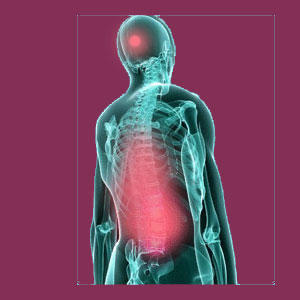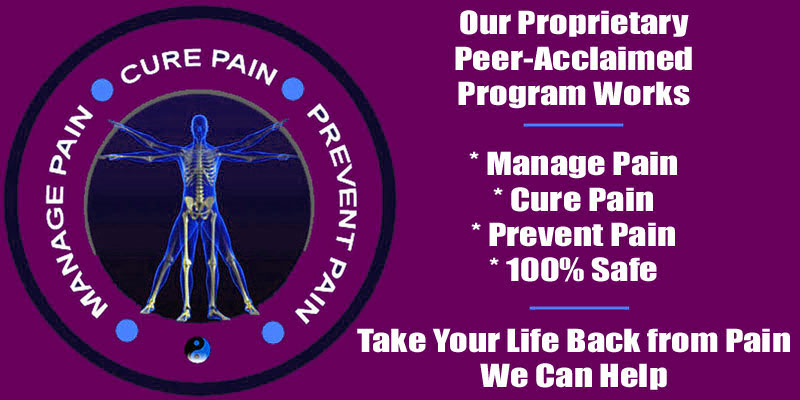
Understanding the psychology of scoliosis is just as important as knowing the physical facts of the condition, especially in young patients. Scoliosis is usually a harmless physical irregularity, but that does not mean that the condition can not enact significant detrimental health consequences. In fact, we see daily examples of patients who are suffering terrible pain due to the mindbody effects of scoliosis and not the structural ramifications.
Scoliosis can form the basis for powerful mindbody pain syndromes. Even when no pain exists, the condition can still create substantial damage to body-image, self-esteem, confidence and general outlook on life. Therefore, we have focused on providing comprehensive education efforts detailing the psychology of atypical side-to-side curvature for over 17 years, much to the benefit of patients and doctors alike.
This vital essay explores the psychological impact of scoliosis on various aspects of personality development and life. If you are a scoliosis patient, a parent of a scoliosis patient or a scoliosis caregiver, this article should be read several times and absorbed thoroughly into your knowledge base.
Diagnostic Nocebo of Scoliosis
The diagnostic process for scoliosis is well documented to be the source of major nocebo effect on a patient’s mindset. Patients are often made to that something is “wrong with them”, that they will not live normal lives, they will have pain and will likely require ongoing treatment and possibly, surgery. None of these myths represent the average case of scoliosis. In fact, these circumstances barely represent the very worst cases of atypical side-to-side spinal curvature, which only encompass a tiny percentage of the total patient population.
This nocebo effect can be increased by a grim and profit-minded caregiver who really applies psychological warfare to create fear in their patients, making them much easier to convince that dramatic treatment is needed. Likewise, the nocebo effect can basically be negated when caregivers present a factual and optimistic view of scoliosis and the patient’s family further bolsters them with support and positive reinforcement. Patients must be made to feel empowered, rather than diminished.
Psychology of Scoliosis Fears
Patients who are diagnosed with scoliosis do not take long to begin to experience various fears associated with the condition. The “what-ifs” become daily thoughts in the minds of many patients, leading them towards existences filled with anxiety and uncertainty.
Patients fear that they will be ostracized. Patients fear that people will treat them differently. Some patients fear that they will never have families of their own or be able to do the type of work they strive towards. Patients fear pain and disability. Patients fear wearing a back brace or doing any type of special therapeutic exercises. Patients certainly fear the idea that they might have to undergo scoliosis surgery in the future and the collateral health consequences these procedures might create.
Scoliosis and Personality Development
Fear and nocebo are a bad combination for anyone to experience. However, when the patient is young and insecure, the psychological effects can be catastrophic. We regularly witness patients develop very severe pain after a positive diagnosis of scoliosis. This is strange considering most of these people have very minor cases that have likely existed asymptomatically for some time already. Logic tells that the physical consequences of the scoliosis are not generally the cause of pain. Instead, the mindbody effects drive a psychogenic imperative to repress the sensitive emotions, fears and anxiety in the subconscious, using pain as the perfect camouflage mechanism. Pain at a young age has terrible lifelong effects on development and generally leads to chronic symptomology that will literally rip a young life from its intended path and hurl it into a great abyss of eternal suffering with little hope of rescue.
Other common scoliosis effects can have similarly dramatic effects on the development of the individual, including the aforementioned degraded body image, confidence and general positive outlook on life.
I can say for absolutely certain that when I was diagnosed at age 16, I felt as if my world had literally ended. I am 101% sure that the abysmal quality care and grim bedside manner I received from my chiropractor was directly responsible for the pain I would suffer for the next 18+ years. I consider myself extremely fortunate to have been able to break this well-established cycle of suffering and pain. However, I know how difficult this proposition is for most patients and this is why we work so diligently in our advocacy efforts.
Psychology of Scoliosis Treatment
As a final note, caregivers should remind themselves daily, before seeing any patient, that they must be kind, gentle and honest with their demeanor. They should never demonize scoliosis, and should do everything possible to provide reassurance and positive reinforcement for their patients.
Furthermore, they must stress the importance of this same positive support from family and friends and make absolutely sure that parents do not inadvertently subject their children to further nocebo by being overprotective or restrictive in their child’s activities.
These proactive measures are important in all scoliosis patients, but are vital in younger patients in particular. Take special care to provide extra assurances to children who must wear braces. If successful in reducing the collateral effects of spinal curvature on the mind, it is highly likely that the patients will thrive and grow to be healthy and able, regardless of having experienced a tiny road-bump of scoliosis. If these efforts fail, the child will likely grow up with damage that can not be undone and might possibly suffer physically and/or psychologically for the remainder of their life.
Scoliosis > Psychosomatic Scoliosis Pain > Psychology of Scoliosis





